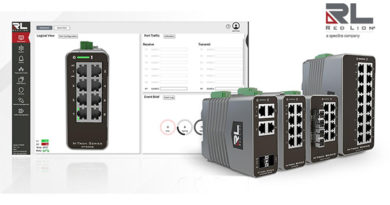Test Cell Retrofits for Quicker, Better Test Results

Test stands are characteristically long-lasting, with extremely durable components giving it a sense of indestructability. The returned value from a hydraulically-enabled durability test stand or electric drives in dyno test stands are enormous, as they are capable of performing engineering tests for decades – assuming that adequate maintenance is carried out regularly. While the hardware of an established test cell might perform perfectly at a given requirement for an extensive period of time, those requirements are fundamentally changing alongside innovations and changes in various fields of engineering. However, replacing an established test stand to keep up with industry trends is a costly investment – while potentially resulting in long lead-in and transition times. Fortunately, there is an alternative to falling behind current technology, or completely replacing expensive hardware. It is possible to get better test results from your existing system retrofitting your test cells; the bespoke installation of modern hardware and migrating to new intuitive software into an existing test stand system. This has been popular for years, and is currently the preferred method of maintaining cutting edge data measurement in test benches for auto engineers across the world.
How Would a Test Cell Retrofit Work and What Benefit do I get out of this?
It is possible to retrofit a test bench with state-of-the-art measuring amplifiers such as the QuantumX data acquisition system and its ruggedized sister SomatXR from HBM. It offers full flexibility for both software and hardware, and is open to a range of platforms, including: catman, LabView or own software solutions based on Visual Studio .NET. There are also numerous ways to physically integrate in real-time into test control via EtherCAT™, PROFINET©, CAN bus or classic voltage lines in parallel to data recording on PCs. An example of a test cell retrofit uses the existing hydraulic system of a test bench while improving measurement data quality due to the improved resolution of the amplifier. The flexibility of the QuantumX’s modules improve the versatility your daily test challenges, while allowing for integration with modern and existing interfaces offering test bench automation options. The type and the amount of channels can vary for every single test and day in a quick and easy way. No more calls of your test bench manufacturer for a quote for new channels – just setup the channels you need for your next job. A test cell retrofit therefore essentially acts as a conduit to improving your test system across the board, from the accuracy of its data measurement to its measurement applications and capabilities. This is a cost-effective way of preserving a large portion of your initial investment in the test cell system, while bringing it up to modern standards.
Test Cell Retrofit Components from HBM
HBM is the market leader of test and measurement technology in automotive, aerospace and machinery market, providing engineers with unique components such as sensors, amplifiers, data acquisition systems and post-process data analysis including distribution. The QuantumX data acquisition system is the perfect tool for all your test and measurement needs, with unparalleled flexibility if you are looking to update your existing system with a test cell retrofit. For reliable data acquisition of different physical quantities and sensor technologies, QuantumX is the preferred choice, with the capability to acquire signal and sensor information in areas such as aircraft testing and infrastructural health monitoring. If you would like any more information about a test cell retrofit, please do not hesitate to contact us.



